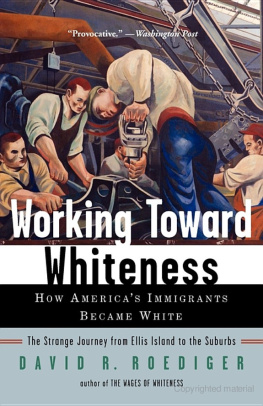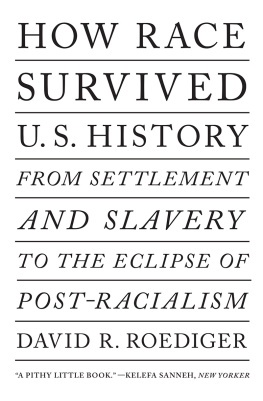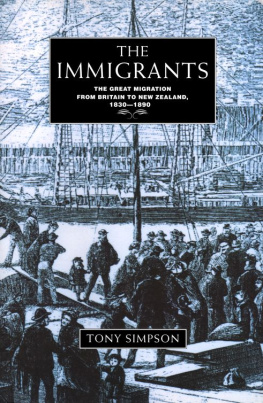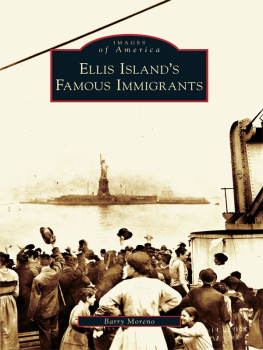Table of Contents
Praise for Working Toward Whiteness
Whiteness studies can enable us to see American history in a wholly new light, and for the development of this field we must thank Roediger.... full of thought-provoking anecdotes and observations.
Boston Globe
... carefully constructed and referenced... Library Journa l
Roedigers book tills some major historical ground.
Publishers Weekly
Drawing upon social and literary history, policy records and popular culture, Roediger carries to the middle of the twentieth century his story of how immigrants to the United States from Europe secured their place in the white raceand at what cost to themselves, others, and the hope of creating a genuine non-racial democracy in the developing industrial El Dorado. Up to the highest standards of scholarship, Working Toward Whiteness is written with the authors usual grace and human sympathy.
Noel Ignatiev, author of How the Irish Became White
ALSO BY DAVID R. ROEDIGER
Our Own Time
Wages of Whiteness
Towards the Abolition
Fellow Worker (editor)
Black on White:
Black Writers on What It Means to Be White
(editor)
Labor Struggles (editor)
History Against Misery
To Jean
Part One
SEEING RACE IN NEW IMMIGRANT HISTORY
CHAPTER 1
New Immigrants, Race, and Ethnicity in the Long Early Twentieth Century
I had my fill of seeing people come down the gangplank on Wednesday, let us say, speaking not a word of English, and by Friday discovering that I was working for them and they were calling me nigger like everybody else. So that the Italian adventure or even the Jewish adventure, however grim, is distinguished from my own adventure.
JAMES BALDWIN, NOVELIST AND ESSAYIST (1971)
This pseudo white identity... was not something that just fell on us out of the blue, but something that many Italian Americans grabbed at with both hands. Many felt that their culture, language, food, songs, music, identity, was a small price to pay for entering the American mainstream. Or they thought, as my parents probably did, that they could keep these good Italian things in private and become white in public.
DIANE DI PRIMA, POET (1999)
One sideshow during the 1993 Wimbledon tennis tournament featured the defending champion, Andre Agassi, calling the eventual winner, Pete Sampras, a monkey. The excitable press coverage that greeted Agassis remark subsided quickly. When Agassi revealed that his own body hair had been removed to make him quicker, he provided a more photogenic story, overshadowing his characterization of Sampras. Unlike former Atlanta Braves pitcher John Rockers controversial reference to a dark-skinned teammate as a fat monkey, Agassis remark lacked any apparently racial bite. Clearly he and Sampras are both white.
At least now they are. Almost no U.S. tennis star in the past decade would have been considered unequivocally white just a century ago. Not Michael Chang, of course, since Chinese nonwhiteness was established by 1900 in court cases, naturalization proceedings, exclusion laws, and pogroms. Certainly not Venus or Serena Williams, who would have been Jim Crowed from tennis clubs and virtually all other privileged public and private U.S. spaces. But not Agassi either. And not Sampras. And not Monica Seles. Agassi, Sampras, and Seles would have embodied the dark white (and possibly not white) immigration problem that a century ago was thought to threaten the racial foundations of the nation. The backgrounds of all three would have dictated their being called new immigrants and doubly damned by the term. On one hand it would have connoted an inexperienced recent arrival, a greenhorn. But new immigrants were also new because they represented a different source of migrantsthe streams from southern and eastern Europe that overtook the streams from northern and western Europe as the century turned and furnished the great majority of the more than 14 million newcomers coming in the first two decades of the twentieth century. As an Armenian American, Agassi would have been part of the immigrant group most singled out for ridicule by Henry James in his writings on race and immigration. He would have seen the whiteness, and hence the fitness for citizenship, of immigrants from his homeland challenged by U.S. attorneys before and after an early twentieth-century federal court decision finding them naturalizable as white. The 1911 Dictionary of Races or Peoples , a U.S. Senate document compiled by the Immigration Commission, credited Armenians as the Aryan race ... of Asiatic Turkey before noting with alarm their remarkable shortness and [the] height of their heads, as well as a flattening of the back of the head which can only be compared to the... Malay. Seles, Yugoslavian born but of Hungarian ancestry, would have been a hunky in the early twentieth century. Samprass Greek background would have excluded him from jobs, housing, unions, and public places along with other Asiatic nonwhites, especially in the West where his tennis game matured. In the United States of a century ago people did not talk about race in the way we do. To understand their history, we need to learn some of their language.
In his 1907 contribution to travel literature, The American Scene , Henry James reflected at tortured length on his 1905 look in at arriving immigrants from the observation areas at Ellis Island and on other contacts with new immigrants. His account eerily anticipated contemporary debates over race and immigration, though the descendants of those he watched are now considered definitively white. Most of the time Jamess tone presaged the panic of the current English Only and anti-immigration movements over the possibility of a racially changed country. At other junctures he less convincingly staked out prematurely multiculturalist hopes that immigration would lead to bigger and better things. James conjured up many images, from cauldron to amalgam, which suggest a melting away of immigrant differences. But he also betrayed sharp anxiety that the numbers and kinds of immigrants and the hotch-potch of racial characteristics they brought to the United States would cause the concept of American to lose any sure meaning. For long passages, he scarcely described anything he actually saw but rather his sense of unsettledness in proximity to new immigrants. Worrying especially over Italians, of superlatively southern type and the swarming [of] a Jewry that had burst all bonds, James feared an immigrant conquest of New York. He struck fretful chords no different, as Alan Trachtenberg aptly writes, from any other high-toned, prejudiced WASP, save in the elegance of his writings. Indeed at times Jamess reactions to immigrants were so overwhelming that even his customary elegance was excruciatingly undermined:
The Italians, who, over the whole land, strike us, I am afraid, as, after the Negro and the Chinaman, the human value most easily produced,... meet us, at every turn, only to make us ask what has become of that element of the agreeable address in them which has, from far back, so enhanced for the stranger the interest and pleasure of a visit to their beautiful country.
But on other levels, Jamess gaze at new immigrantsa racially inflected term that categorized the numerous newcomers from southern and eastern Europe as different both from the whiter and longer established northern and western European migrants to the United States and from the nonwhite Chinese and other Asiaticsopened for him new possibilities and alien dramas. He briefly wrestled with the possibility that the U.S. scene was always one of unsettledness. He raised the prospect that the immigrant accent would be Americas very ultimate future. Though it would be one we shall not know as English, it might nonetheless become the very music of humanity. By turns hopeful and despairing regarding the racial assimilationwhat he tellingly called the mitigationof new immigrants, James also registered fears that the huge white-washing brush of Anglo-American culture would render them colourless.











